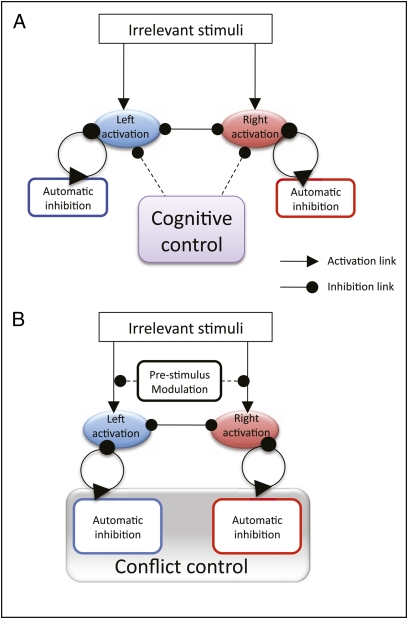Fig. 4.
(A) Representation of traditional separation between subliminal inhibition and cognitive-control mechanisms. (B) Illustration of our hypothesis in which subliminal inhibition is a component part of cognitive control and the important distinction lies between reactive mechanisms and prestimulus processes, not between cognitive and subliminal systems. Placing the influence of prestimulus control on the incoming sensorimotor connections is one way in which it could have a general influence before the direction of the stimuli is known and without globally increasing response latency.

